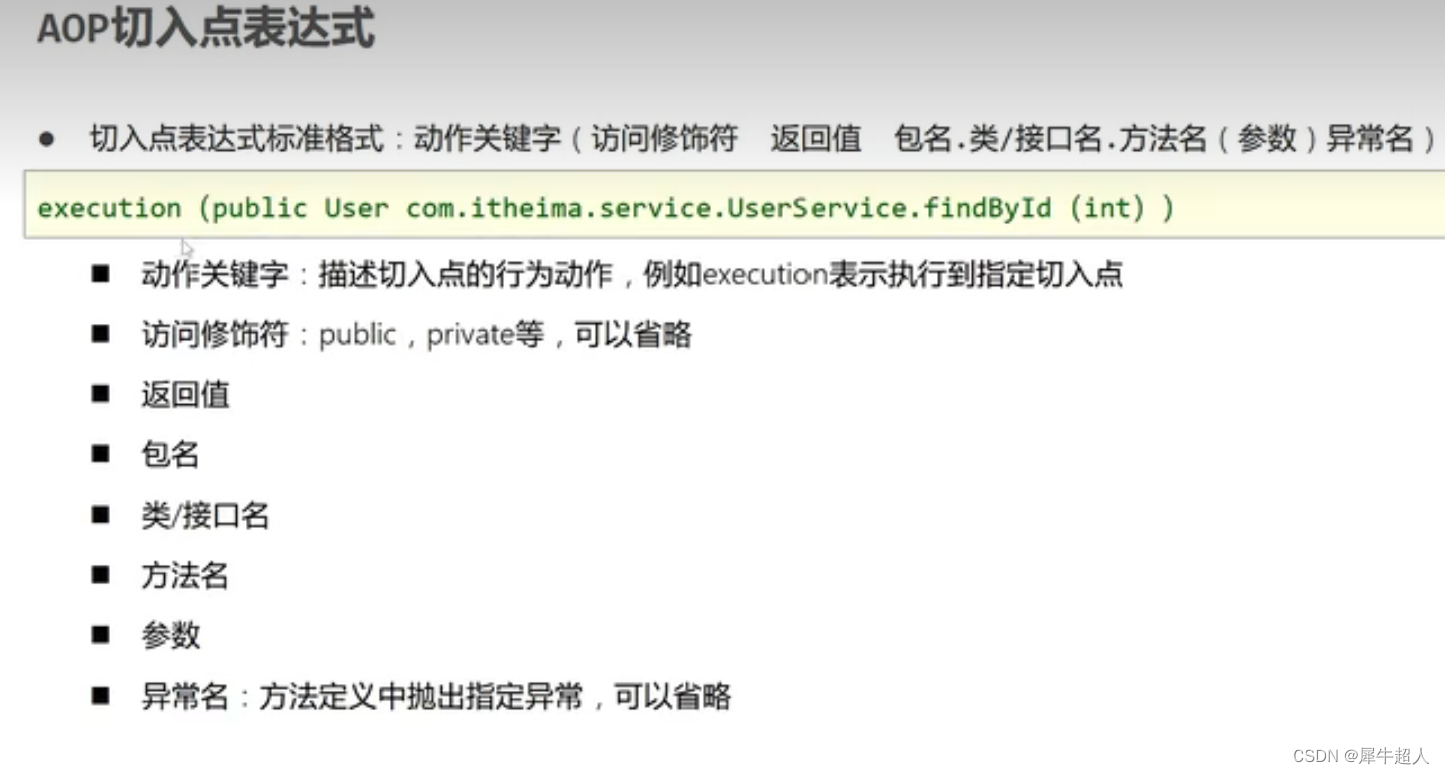一、简介+工作流程。
简介
SpringAop实际上就是代理模式
切面=切入点+连接点+通知


工作流程


二、导入依赖
1.spring-aop包
该包是在spring-context依赖下的子包,所以有context就有aop

<dependency>
<groupId>org.springframework</groupId>
<artifactId>spring-context</artifactId>
<version>5.2.10.RELEASE</version>
</dependency>2.aspectjweaver包
<dependency>
<groupId>org.aspectj</groupId>
<artifactId>aspectjweaver</artifactId>
<version>1.9.4</version>
</dependency>三、定义接口和实现类
public interface BookDao {
public void save();
public void update();
}
tip:@Repository 注解加在Dao层上,也就是与数据库操作的层上。
@Repository
public class BookDaoImpl implements BookDao {
public void save() {
System.out.println(System.currentTimeMillis());
System.out.println("book dao save ...");
}
public void update(){
System.out.println("book dao update ...");
}
}四、定义通知类+制作通知+定义切入点
@Component //告诉spring要把MyAdvice 当作Bean
//设置当前类为切面类类
@Aspect //告诉spring要把MyAdvice 当作AOP,切面类
//定义通知类
public class MyAdvice {
//设置切入点,要求配置在方法上方
@Pointcut("execution(void com.itheima.dao.BookDao.update())")
private void pt(){}
//设置在切入点pt()的前面运行当前操作(前置通知)
@Before("pt()")
//制作共性通知
public void method(){
System.out.println(System.currentTimeMillis());
}
}由图可知,@Aspect 是告诉spring这是一个aop,@Pointcut 代表 pt()方法是一个切入点,注意py()方法只需要一个空架子 然后@Before(“pt()”) 代表在pt()方法之前将共性方法切入进去。
五、在spring核心配置中开启注解式aop的功能
@Configuration
@ComponentScan("com.itheima")
//开启注解开发AOP功能
@EnableAspectJAutoProxy
public class SpringConfig {
}
六、自定义service层调用测试
public class App {
public static void main(String[] args) {
ApplicationContext ctx = new AnnotationConfigApplicationContext(SpringConfig.class);
BookDao bookDao = ctx.getBean(BookDao.class);
// bookDao.update();
bookDao.update();
// System.out.println(bookDao.getClass());
}j
}七、切入点详解
切入点表达式语法规格:

切入点表达式书写技巧:

八、AOP通知类型
1.@After----在切入点之后

2.@Before----在切入点之前

3.@Around----在切入点周围
ProceedingJoinPoint是用来获取原方法的对象,并且返回的是原方法的返回值

 4.@AfterReturning
4.@AfterReturning
5.@AfterThrowing
